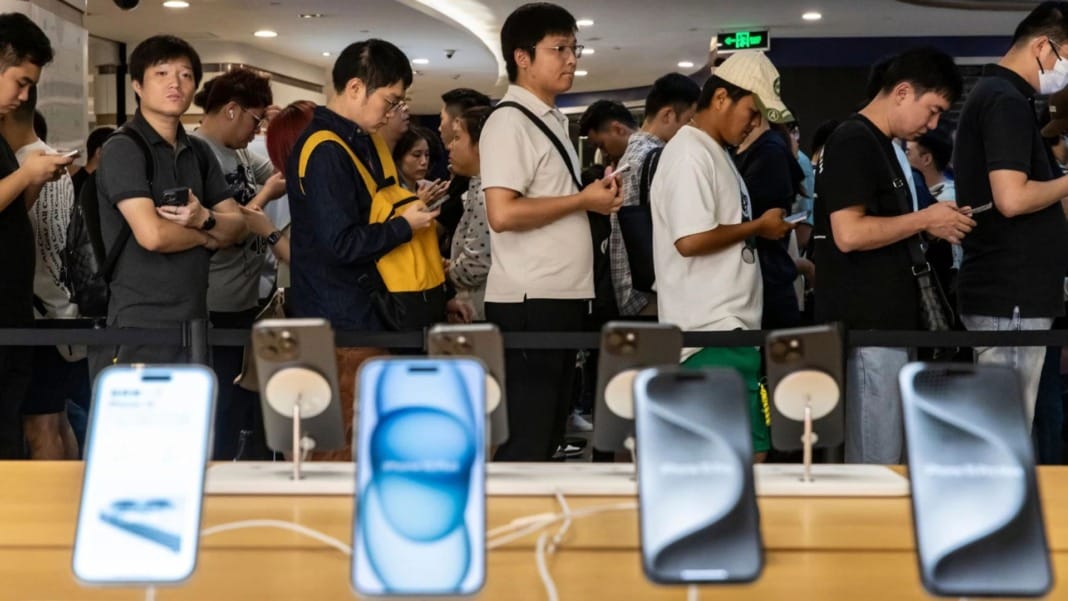China’s smartphone market experienced a significant decline in May, with shipments dropping 21.8% year-over-year to 23.7 million units, according to data released by the China Academy of Information and Communications Technology (CAICT). This marks the steepest monthly decline so far in 2025 and comes just after a short-lived recovery from February to April.
In that earlier stretch, you may have noticed signs of improvement. February saw a 38% jump to 19.7 million units, hinting at renewed consumer interest. But that momentum has not lasted. May’s fall reflects deep-rooted shifts in the smartphone industry, affecting both domestic and international players in different ways.
Foreign brands steady, local firms struggle
If you’re wondering whether all smartphone brands were hit equally, the answer is no. Foreign manufacturers, such as Apple, experienced a comparatively mild decline, with shipments falling by just 9.7% in May. But for China’s home-grown brands, it’s a different story. Companies like Huawei and Xiaomi saw a combined drop of 24.2%, reflecting a more severe impact on domestic players.
Why the difference? One factor could be the sharp reduction in new product launches by Chinese brands. Just 36 new models were introduced in May — a 25% decrease from the same month last year. In contrast, from January to May 2025, Chinese brands released a total of 192 new models, representing a 9.7% increase from the previous year. The Shenzhen Mobile Communications Association pointed to challenges in launching these new domestic models as a reason for the steep decline.
Bigger picture: A market that rises and falls in cycles
It’s easy to look at May’s numbers and feel alarmed. But if you step back, you’ll see this isn’t the first time the Chinese smartphone market has stumbled. In fact, since its first-ever drop in 2017, the market has shown a pattern of bouncing between periods of growth and decline.
Back in 2016, China shipped nearly 490 million smartphones — a peak that has gradually slid to around 300 million by 2020. Yet there have always been rebounds, often fuelled by new technologies. The arrival of 5G devices in 2019, for instance, sparked fresh interest and helped reverse previous slumps.
Today, the market is simply maturing. With smartphone ownership near 60% of the population, most people now only buy new devices as replacements. This means fewer buyers and longer gaps between purchases — a natural evolution of a saturated market.
Consumer habits and pricing trends are reshaping demand
You might be wondering what’s changed on the consumer side. The answer lies in your habits: people are holding onto their phones longer. The average replacement cycle now lasts around 26.8 months. Users aren’t rushing to upgrade unless there’s a clear benefit.
This shift is driving the trend toward more expensive, longer-lasting phones. Apple, with its premium models, is holding up well despite its high price tags. Huawei’s top-tier Mate series also continues to perform strongly. These brands are tapping into a new kind of buyer — one who prefers quality over quantity.
The average price of a smartphone in China has already crossed the US$400 mark, with analysts expecting this to rise even further. That’s a significant shift from the earlier days of low-cost devices and rapid upgrades.
So, where does the market go from here? For smartphone makers, it’s clear that simply releasing new models isn’t enough. They’ll need to provide a compelling reason to upgrade — whether through improved cameras, AI-powered features, or groundbreaking innovation.
Otherwise, May’s drop might not be the last.





